World Christianities Essay Prize
 The Journal of Ecclesiastical History has confirmed the launch of the new JEH World Christianities Prize. Full details are available, but a prize, worth £500 and publication in the Journal, will be awarded to the best essay submitted on any aspect of the history of Christianity outside Europe and North America from the year 700 to the present. The deadline for submission for the first award is 31 March 2017.
The Journal of Ecclesiastical History has confirmed the launch of the new JEH World Christianities Prize. Full details are available, but a prize, worth £500 and publication in the Journal, will be awarded to the best essay submitted on any aspect of the history of Christianity outside Europe and North America from the year 700 to the present. The deadline for submission for the first award is 31 March 2017.
Mission Education in Burundi
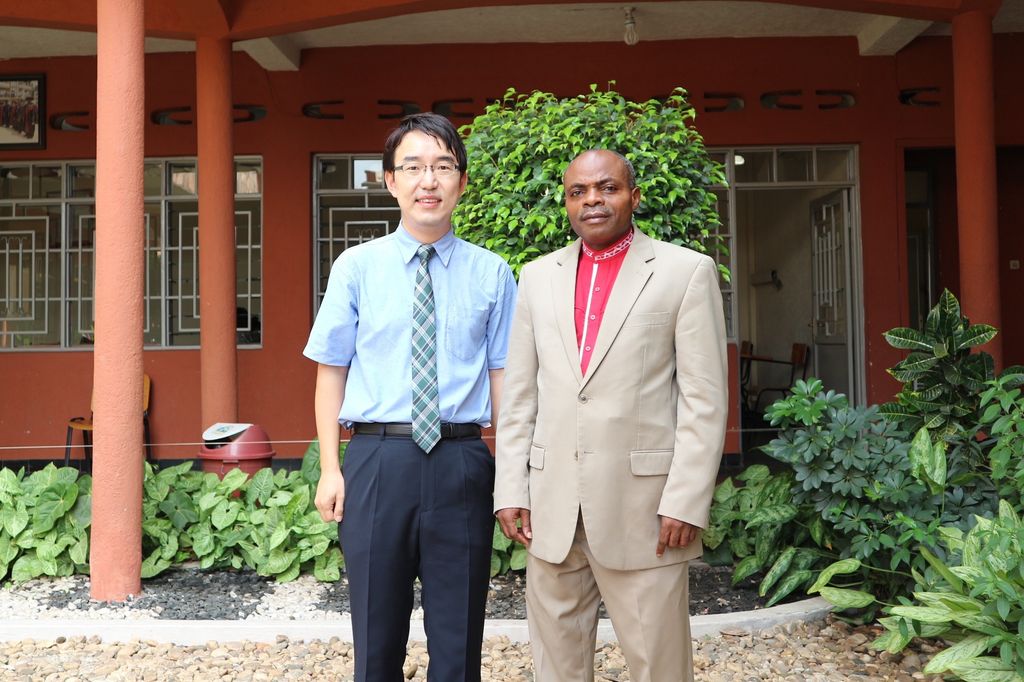 The International Leadership University (ILU) in Burundi has established a graduate program in mission studies. Dr. Fohle Lygunda, the Academic Dean and Daewon Moon, a CGCM student associate, have collaborated for the past several years to open research and education in this field. Mission Studies is quite new to the central African region. The first group of master’s students have completed their program and produced solid theses on various themes of mission studies. ILU-Burundi, the only university in the country that offers English-based degree programs, has drawn theological students from Burundi, Rwanda, Uganda, Kenya, Nigeria, and DR Congo. Dr. Lygunda recently organized the first International Consultation on Missiology for Central Africa in Kinshasa, DR Congo, in order to promote missiological research on the region.
The International Leadership University (ILU) in Burundi has established a graduate program in mission studies. Dr. Fohle Lygunda, the Academic Dean and Daewon Moon, a CGCM student associate, have collaborated for the past several years to open research and education in this field. Mission Studies is quite new to the central African region. The first group of master’s students have completed their program and produced solid theses on various themes of mission studies. ILU-Burundi, the only university in the country that offers English-based degree programs, has drawn theological students from Burundi, Rwanda, Uganda, Kenya, Nigeria, and DR Congo. Dr. Lygunda recently organized the first International Consultation on Missiology for Central Africa in Kinshasa, DR Congo, in order to promote missiological research on the region.
The Indefatigable Work of Don Carlos Janes
At the turn of the 20th century, Churches of Christ had less than a nominal level of missionary activity. With few missionaries abroad and fewer churches willing to support them along with no denominationally baptized mechanism for conducting a missionary enterprise, the prospect of a viable missions program that covered the denomination seemed bleak for Churches of Christ. Don Carlos Janes (1877-1944) would find himself in this difficult situation in 1911 as he began his work as a missionary promoter. Jeremy Hegi recently published an article titled “One-Man Missionary Society: The Indefatigable Work of Don Carlos Janes” in Restoration Quarterly Vol. 58 No. 4. The essay demonstrates how Janes established and maintained a missionary consciousness among the congregations of Churches of Christ, in addition to recruiting and supporting a majority of missionaries of the denomination between 1911 and 1944.
Ecumenism, United Methodism, Challenges and Shifts
Dr. Glen M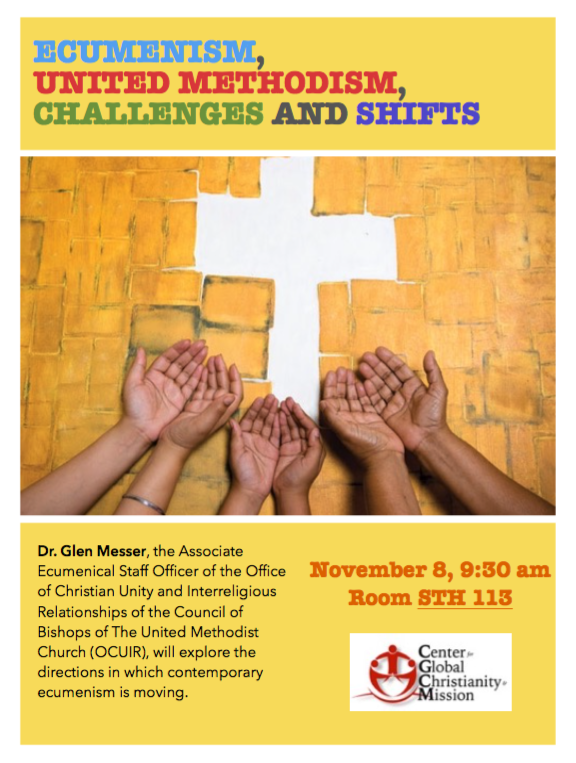 esser, the former Associate Ecumenical Staff Officer of the Office of Christian Unity and Interreligious Relationships of the Council of Bishops of the United Methodist Church (OCUIR), will explore the directions in which contemporary ecumenism is moving.
esser, the former Associate Ecumenical Staff Officer of the Office of Christian Unity and Interreligious Relationships of the Council of Bishops of the United Methodist Church (OCUIR), will explore the directions in which contemporary ecumenism is moving.
New Approaches to Jesuit Missions
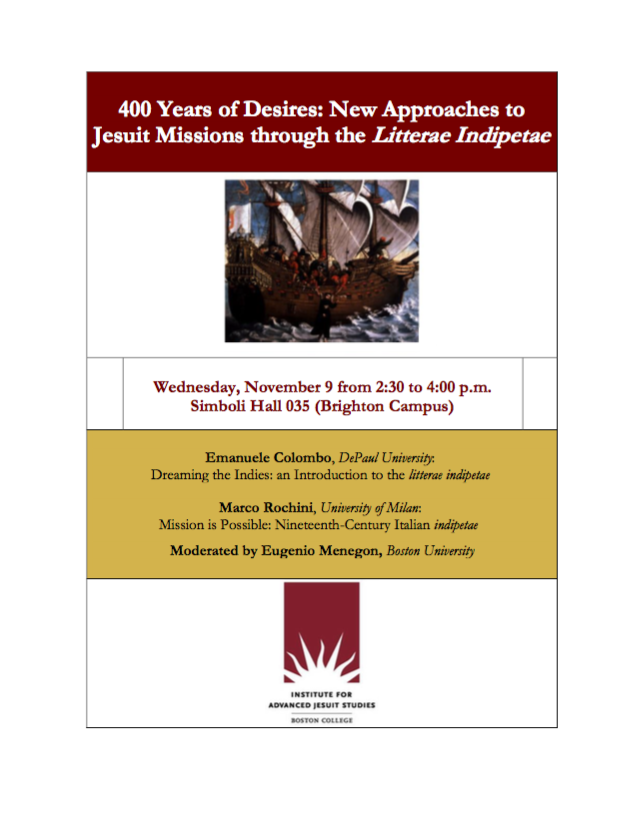 "400 Years of Desires: New Approaches to Jesuit Missions through the Litterae Indipetae"
"400 Years of Desires: New Approaches to Jesuit Missions through the Litterae Indipetae"
To contact the Institute for Advanced Jesuit Studies, please call 617-552-2568 or e-mail iajs@bc.edu
Aesthetics of African Traditional Religion
 Dr. Nimi Wariboko, Walter G. Muelder Professor of Social Ethics and CGCM faculty associate, will be giving a lecture on aesthetics of African traditional religion and Pentecostalism in Nigeria. The lecture will take place at 232 Bay State Road, Room 505 at 5:00 pm. The public is welcome.
Dr. Nimi Wariboko, Walter G. Muelder Professor of Social Ethics and CGCM faculty associate, will be giving a lecture on aesthetics of African traditional religion and Pentecostalism in Nigeria. The lecture will take place at 232 Bay State Road, Room 505 at 5:00 pm. The public is welcome.
Legacy of John Sung
 In the 1930s, no evangelist traveled further, spoke more often, or led more Chinese people to faith than Song Shangjie (John Sung). In the October 2016 issue of the International Bulletin of Mission Research, Daryl Ireland explores the legacy of one of China's most dynamic and memorable Christians.
In the 1930s, no evangelist traveled further, spoke more often, or led more Chinese people to faith than Song Shangjie (John Sung). In the October 2016 issue of the International Bulletin of Mission Research, Daryl Ireland explores the legacy of one of China's most dynamic and memorable Christians.
This is the first scholarly article to make use of Sung's own personal diaries (not those edited and published by his daughter). They reveal new facets of his life and ministry, most memorably regarding his time spent in an insane asylum. Sung famously spoke of his hospitalization in 1927 as a gross misunderstanding of his conversion. His diaries, however, suggest another story. What happened in the asylum is summarized in the Legacy article, but will be unpacked further in Ireland's forthcoming article on conversion in the journal Mission Studies.
Eastern Fellowship of Professors of Mission Report
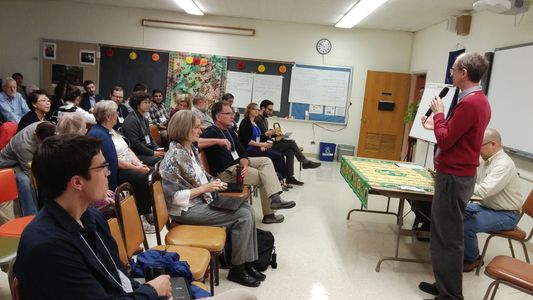 On the weekend of October 21st and 22nd, professors and graduate students representing 18 different religious and educational institutions from the North East and Mid Atlantic United States met at the 99th annual Eastern Fellowship of Professors of Mission. Seeking to survey and understand the current state of missions education in the region, the theme of the conference was “Education for Mission: Current Status and Future Visions.” There were three panels that represented seminaries, undergraduate institutions, and churches, respectively. Panelist in each session addressed the same set of questions from their particular contexts: (1) what are you teaching? (2) what are your teaching objectives? (3) what should we be teaching and why? and (4) how do you see mission education linked with the task of mission service?
On the weekend of October 21st and 22nd, professors and graduate students representing 18 different religious and educational institutions from the North East and Mid Atlantic United States met at the 99th annual Eastern Fellowship of Professors of Mission. Seeking to survey and understand the current state of missions education in the region, the theme of the conference was “Education for Mission: Current Status and Future Visions.” There were three panels that represented seminaries, undergraduate institutions, and churches, respectively. Panelist in each session addressed the same set of questions from their particular contexts: (1) what are you teaching? (2) what are your teaching objectives? (3) what should we be teaching and why? and (4) how do you see mission education linked with the task of mission service?
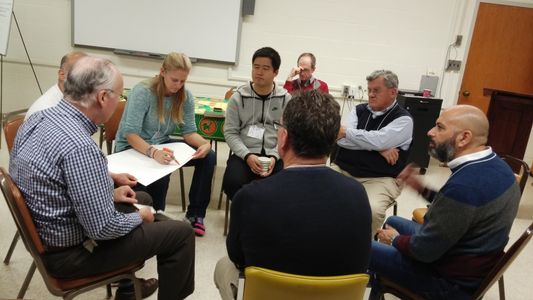 The conversation that ensued was productive and informative. Panelists and attendants alike discussed that as the cultural and religious context of the United States was changing, the demography of the students who sought mission education shifted as well. Moreover, such a shift demanded new starting points and pedagogies for teaching mission theory and practice that fit into the rich pluralistic context that students would inhabit on local, regional, national, and even global levels. One striking feature of the conference was the theological diversity of those who attended. It was encouraging to see attendees from both theologically conservative and liberal backgrounds come together to discuss the important and pressing issue of training mission practitioners. As Dana Robert, Boston University’s Truman Collins Professor of World Christianity and History of Mission, said in her opening remarks, the Eastern Fellowship of Professors of Mission had truly moved beyond the modernist and fundamentalist controversies of the 20th century in order to discern how mission professors and practitioners could faithfully participate in the Mission of God.
The conversation that ensued was productive and informative. Panelists and attendants alike discussed that as the cultural and religious context of the United States was changing, the demography of the students who sought mission education shifted as well. Moreover, such a shift demanded new starting points and pedagogies for teaching mission theory and practice that fit into the rich pluralistic context that students would inhabit on local, regional, national, and even global levels. One striking feature of the conference was the theological diversity of those who attended. It was encouraging to see attendees from both theologically conservative and liberal backgrounds come together to discuss the important and pressing issue of training mission practitioners. As Dana Robert, Boston University’s Truman Collins Professor of World Christianity and History of Mission, said in her opening remarks, the Eastern Fellowship of Professors of Mission had truly moved beyond the modernist and fundamentalist controversies of the 20th century in order to discern how mission professors and practitioners could faithfully participate in the Mission of God.
Report by Jeremy Hegi
At Home in Exile
Russell Jeung, a leading sociologist of race and religion among Asian Americans, will be sharing from his spiritual memoir At Home in Exile. His story contextualizes the gospel from an Asian American perspective.
Making of Buddhism in the West
Eva Pascal argues that the idea of Buddhism as a common religion across much of Asia, did not emerge in the 19th century as has been widely assumed. Instead, it was Spanish Franciscan Friars in the 16th century who, in their interactions with Buddhist monks in Thailand, China, and Japan recognized a common core. In a lecture delivered at a graduate symposium on October 7, 2016, Pascal explained that the Franciscans not only perceived a single founder behind the various names used for the Buddha in Asia, they also recognized the features of “religion.” In other words, Franciscans concluded that Buddhist monks were not merely superstitious–the label associated with heathen ideas. Instead, they began to use the term “religion” for Buddhist beliefs and practices, because the Franciscans recognized monks as their counterparts. Buddhist monks lived in monastic communities, adhered to a life of voluntary poverty, took vows of chastity, preached obedience to commandments, and the like. The parallels led the Franciscan missionaries to introduce Buddhism to the West as a religion, a total system comparable to Christianity.


